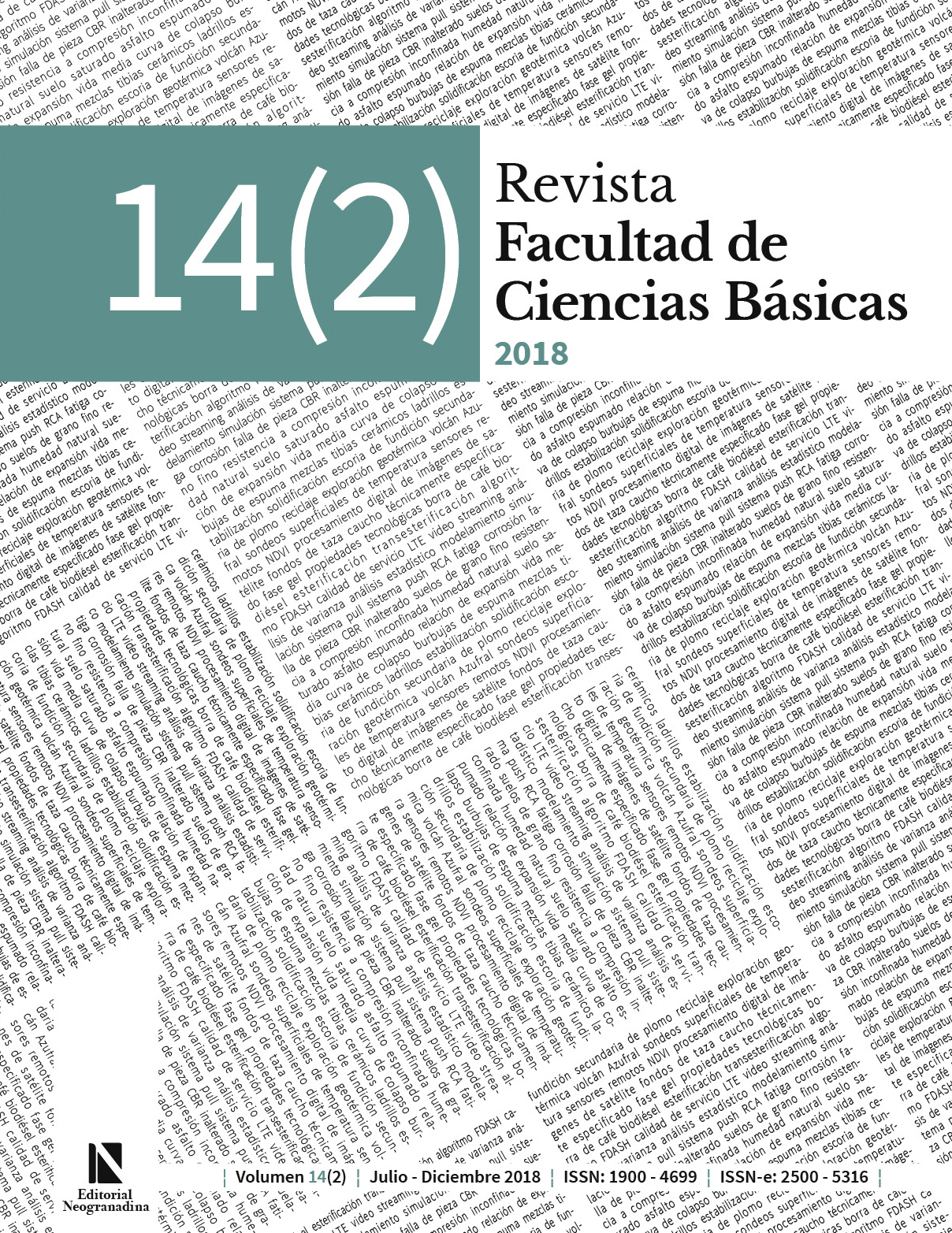Diet of Saccopteryx Leptura (chiroptera: emballonuridae) in an ex-urban area of the andean foothills
Abstract
It is estimated that more than 70% of the bat species are insect consumers, thus contributing to the control of insect populations, and some of those insects can be agricultural pests or disease vectors. Therefore, to study the diet of insectivorous bats in anthromes is the first step to determine their potential value for humans. Herein, we analyzed the diet of a colony of a Neotropical insectivorous bat, Saccopteryx leptura, which is tolerant to lowland urban environments. We collected 24 samples of feces from a colony of seven and nine individuals. Insect parts of the orders Hymenoptera (2 morph-species), Coleoptera (2 morph-species), Hemiptera (2 morph-species), Blattodea (1 morph-species), and Lepidoptera (1 morph-species) were founded. One Hymenoptera and the two Coleoptera comprised almost 80% of the prey in the bat’s diet and the last four orders have not been previously recorded in the S. leptura diet. Among the Coleoptera there were members of the family Curculionidae, and among the Hemiptera there were Cicadellidae; these families are frequently agricultural pests. Further studies should explore strategies to take advantage of this bat’s potential services.
Downloads
References
• Albuja Viteri, Luis (1999). Murciélagos del Ecuador. Departamento de Ciencias Biológicas. EPN. Quito, 345 p.
• Altringham, J.D. 2001. Bats: biology and behaviour. Oxford University Press, New York, 262 p.
• Bates, M. 1948. Climate and vegetation in the Villavicencio region of eastern Colombia. Geographical Review, 38: 555-574. https://doi.org/10.2307/211443
• Bernard, E. 2002. Diet, activity and reproduction of bat species (Mammalia, Chiroptera) in Central Amazonia, Brazil. Revista Brasileira de Zoologia, 19(1): 173-188. https://doi.org/10.1590/S0101-81752002000100016
• Boshell Manrique, J. 1938. Informe sobre la fiebre amarilla silvestre en la región del Meta, desde julio de 1934 hasta diciembre de 1936. Revista de la Facultad de Medicina, 6: 407-427.
• Bradbury, J., Emmons, L.H. 1974. Social organization of some Trinidad bats. I. Emballonuridae. Ethology, 36: 137-183.
• Bradbury, J.W., Vehrencamp, S.L. 1976. Social organization and foraging in emballonurid bats. Behavioral Ecology Sociobiology, 1: 337-381. https://doi.org/10.1007/BF00299399
• Cleveland, C.J., Betke, M., Federico, P., Frank, J.D., Hallara, T.G., Horn, J., López, J.D., Jr., McCracken, G.F., Medellín, R.A., Moreno-Valdez, A., Sansone, C.G., Westbrook, J.K., Kunz, T.H. 2006. Economic value of the pest control service provided by Brazilian free-tailed bats in south-central Texas. Frontiers in Ecology and the Environment, 4: 238-243. https://doi.org/10.1890/1540-9295(2006)004[0238:EVOTPC]2.0.CO;2
• Eisenberg, J.F. 1989. Mammals of the Neotropics: the northern Neotropics. The University of Chicago Press, Chicago, 449 p.
• Fenton, M.B., Simmons, N.B. 2014. Bats: a world of science and mystery. University of Chicago Press, Chicago, 303 p.
• Gold, C. S., Pena, J., Karamura, E. 2001. Biology and integrated pest management for the banana weevil Cosmopolites sordidus (Germar) (Coleoptera: Curculionidae). Integrated Pest Management Reviews, 6 (2): 79-155. https://doi.org/10.1023/A:1023330900707
• Hood, C., Gardner, A.L. 2007. Family Emballonuridae Gervais, 1856. pp. 188-207, En: Mammals of South America, volume 1. Marsupials, xenarthrans, Shrews, and Bats. (A.L. Gardner, ed.). The University of Chicago Press. Chicago.
• Longstaff, B. C. 1981. Biology of the grain pest species of the genus Sitophilus (Coleoptera: Curculionidae): a critical review. Protection Ecology, 3: 83-130.
• Maine, J.J., Boyles, J.G. 2015. Bats initiate vital agroecological interactions in corn. Proceedings of the National Academy of Sciences of the United States of America, 112(40), 12438–12443. https://doi.org/10.1073/pnas.1505413112
• Mantilla-Meluk, H., Ramírez-Chaves, H. E., Jiménez-Ortega, A. M., & Rodríguez-Posada, M. E. (2014). Emballonurid bats from Colombia: Annotated checklist, distribution, and biogeography. Therya 5(1), 229-255. https://doi.org/10.12933/therya-14-189
• Marzluff, J.M., Bowman, R., Donnelly, R. 2001. A historical perspective on urban bird research: trends, terms, and approaches. pp. 1-17. En: Marzluff, J.M., Bowman, R., Donnelly, R. (Eds.). Avian ecology and conservation in an urbanizing world. Kluwer Academic. Norwell, MA. https://doi.org/10.1007/978-1-4615-1531-9_1
• Nogueira, M. R., Peracchi, A. L., & Pol, A. (2002). Notes on the lesser white-lined bat, Saccopteryx leptura (Schreber) (Chiroptera, Emballonuridae), from southeastern Brazil. Revista Brasileira de Zoologia, 19(4): 1123-1130. https://doi.org/10.1590/S0101-81752002000400017
• Norberg, U.M., Rayner, J.M.V. 1987. Ecological morphology and flight in bats (Mammalia; Chiroptera): wing adaptations, flight performance, foraging strategy and echolocation. Philosophical Transactions of the Royal Society, London B, 316: 335-427. https://doi.org/10.1098/rstb.1987.0030
• Solari, S., Muñoz-Saba, Y., Rodríguez-Mahecha, J.V., Defler, T.R., Ramírez-Chaves, H.E., Trujillo, F. 2013. Riqueza, endemismo y conservación de los mamíferos de Colombia. Mastozoología Neotropical, 20: 301-365.
• Stephens, D.W., Krebs, J.R. 1986. Foraging theory. Monographs in Behavior and Ecology. Princeton Univesity Press, Princeton, 264 p.
• Pecci, M. G., Laguna, I. G., Avila, A. O., de Remes Lenicov, A. M. M., Virla, E. G., Borgogno, C., & Paradell, S. 2015. Difusión del Corn Stunt Spiroplasma del maíz (Spiroplasma kunkelii) y del vector (Dalbulus maidis) en la República Argentina. Revista de la Facultad de Agronomía, La Plata, 105(1), 1-8.
• Simpson, S. E., Nigg, H. N., Coile, N. C., & Adair, R. A. 1996. Diaprepes abbreviatus (Coleoptera: Curculionidae): host plant associations. Environmental Entomology, 25(2), 333-349. https://doi.org/10.1093/ee/25.2.333
• Tirira, D., Arévalo, G. 2012. La familiia Emballonuridae en el Ecuador: un catálogo de registros y colecciones. pp. 123-170. En: Tirira, D., Burneo, S.F. (Eds.). Investigación y conservación sobre murciélagos en el Ecuador. Pontificia Universidad Católica del Ecuador. Fundación Mamíferos y Conservación. Asociación Ecuatoriana de Mastzoología. Quito, Ecuador.
• Triplehorn, C.A., Johnson, N.F. 2005. Borror and Delong's introduction to the study of insects. 7° edition ed. Thomson Books/Cole, Belmont, CA,
• Weintraub P, y Beanland L. 2006. Insect vectors of phytoplasmas. Annual Review of Entomology, 51, 91-111.
• Weintraub P, y Wilson M. 2010. Control of phytoplasma diseases and vectors. En: Phytoplasmas genomes, plant hosts and vectors. CABI, United States; 233-249p.
• Whitaker, J.O., Jr., McCracken, G.F., Siemers, B.M. 2009. Food habits analysis of insectivorous bats, pp. 567-592. En: Kunz, T.H., Parsons, S. (Eds.). Ecological and behavioral methods for the study of bats. 2° ed. The Johns Hopkins University Press. Baltimore, USA.
• Yancey, F.D., II, Goetze, J.R., Jones, C. 1998. Saccopteryx leptura. Mammalian Species, 582: 1-3. https://doi.org/10.2307/3504379











